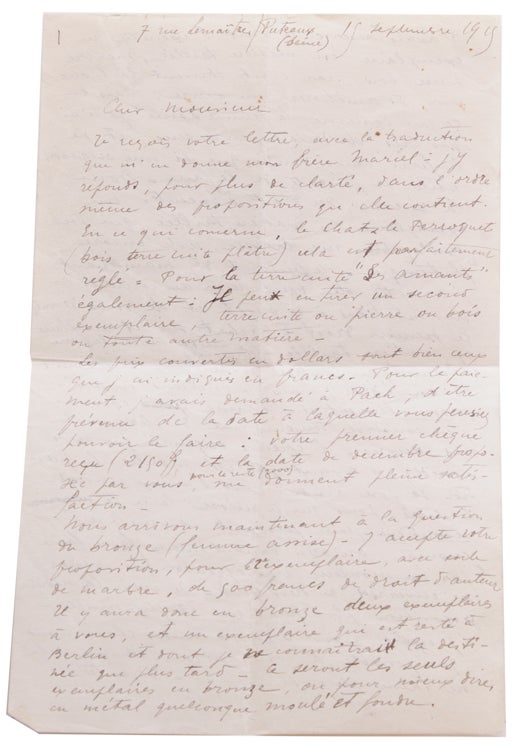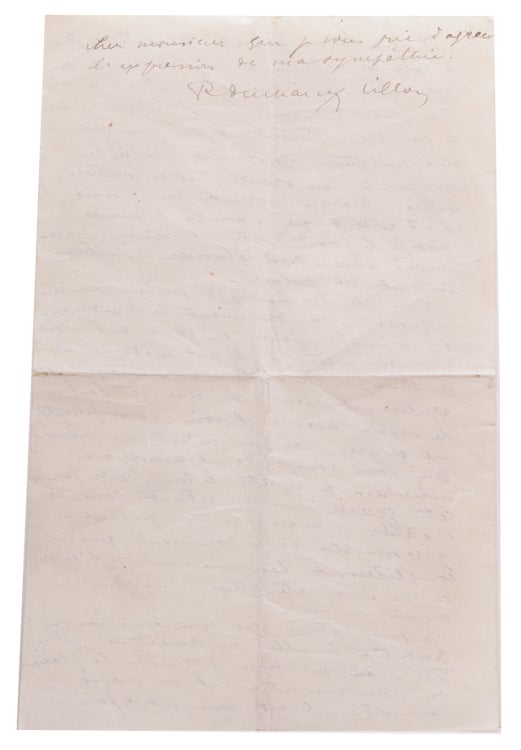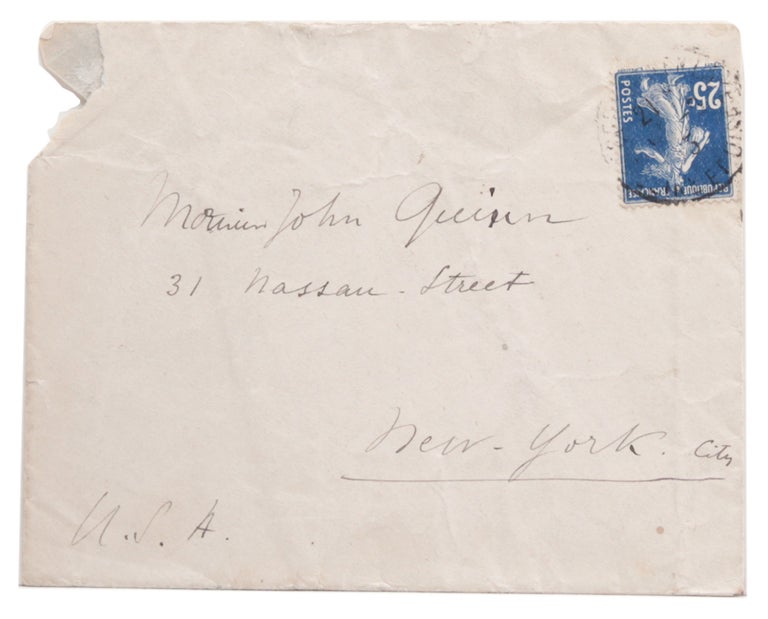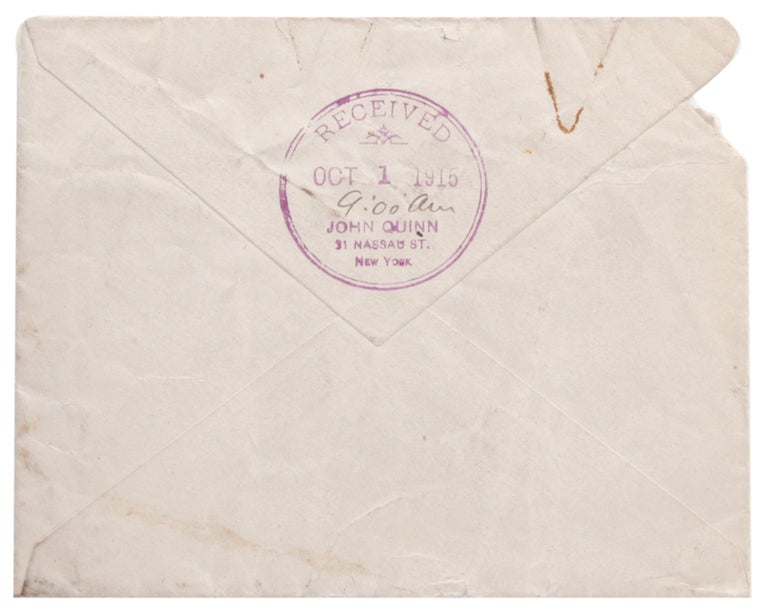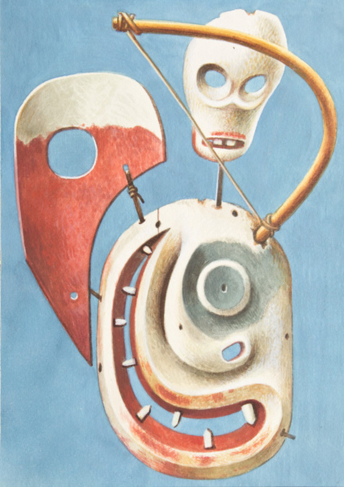Duchamp Villon on His Sculptures
Autograph letter, signed (“R Duchamp Villon”), to John Quinn, 15 Septmber 1915.
7 Rue Lemaître, Puteaux (Seine): 15 September 1915.
Price: $2,750.00
About the item
Ink on paper, 4 pp. 8vo. Duchamp Villon on His Sculptures. Old folds. Fine. With autograph envelope, docketed on verso with Received stamp of John Quinn’s office 1 Oct 1915. Reid, The Man from New York, pp. 468-9; translation of this letter by Walter Pach is in the Quinn Collection, NYPL. Cf. Judith Zilczer, “Raymond Duchamp-Villon”, Philadelphia Museum of Art Bulletin 76:330 (1980), pp. 3-24. Provenance: John Quinn; his sister Julia Anderson; and by descent.
Item #323092
Sculptor Raymond Duchamp Villon (1876-1918), brother of Jacques Villon and Marcel Duchamp, writes to New York art collector John Quinn, concerning his plaster and bronze sculptures, and acknowledging receipt of Quinn’s payment:
“I have your letter, with the translation which my brother Marcel gave me me, and respond to it in the same order as the propositions it contains …
“We now arrive at the question of the bronze (Femme Assise), I accept your propostion, for the specimen, with marble base, of 500 francs for author’s rights, there will thus be in bronze two specimens for you, and one specimen which remains in Berlin and whose destiny I will learn later. These will be the only copies in bronze, or, more precisely, in any foundry metal…
“I appreciate the care with which you display my works, for me this is proof that you understand … I regret the time lost to this war, which keeps me far from the workshop, … I am certain that an occasion will present itself for a trip to New York and that we will have the pleasure of meeting …”
Duchamp-Villon had exhibited a bronze of the Femme Assise in 1914. Quinn bought the plaster model in 1915, and following the artist’s directions, had the sculpture cast at the Roman Bronze Works in Brooklyn (these sculptures are now at RISD and the Museum Ludwig, Cologne). The letter elsewhere refers to le Chat, le Perroquet, and les Amants, and to making a copy of the plaster of the Femme Assise for the artist. (The duplicate plaster was damaged in transit; it is now in the Philadelphia Museum of Art; Quinn gave the original plaster to Walt Kuhn, but its subsequent history is unknown).
The meeting with Quinn never occurred: Duchamp Villon, who had studied medicine before turning to sculpture, served in the French army in a medical capacity and died of typhoid in 1918. Quinn owned many sculptures by Duchamp Villon and underwrote the production of the memorial volume, which was published shortly before Quinn}s death. The catalogue of the 1926 Memorial Exhibition of works owned by John Quinn lists three sculptures by Duchamp Villion: Torse d’Homme, Baudelaire, Femme Assise.

